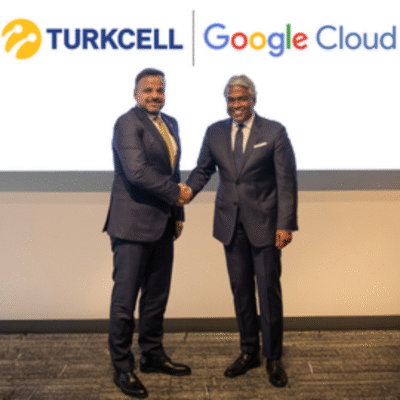Ransomware: A Growing Threat to Customer Trust and Brand Reputation
In recent years, ransomware attacks have dramatically shifted from being perceived solely as an IT problem to a significant threat to customer trust and brand reputation. Enterprises grappling with systemic breaches that not only lock down their operations but also expose sensitive customer information face dire consequences. Every minute of downtime or data loss reverberates through the customer experience, establishing the security of client data as critical to brand reputation alongside product quality.
Rising Costs of Ransom
According to Sophos’ State of Ransomware in Retail report, the financial impact of ransomware is becoming increasingly intense. A staggering 58% of organizations that fell prey to ransomware in the past year chose to pay the ransom—marking the second-highest payment rate in five years. The median ransom demand skyrocketed to $2 million, doubling from 2024, while the average payment increased by 5% to $1 million. The retail sector has particularly suffered, with high-profile companies becoming prime targets for cybercriminals exploiting vulnerabilities in their systems.
The Shift in Attack Vectors
The landscape of ransomware is evolving. Where previous attacks may have concentrated on servers, malicious actors are now increasingly targeting individuals to gain entry into enterprise systems. Ron Zayas, Founder and CEO of Ironwall by Incogni, emphasizes this shift, noting that 70% of recent ransomware attacks originated from users rather than servers. The sophistication of these attacks is growing, as cybercriminals leverage data to enhance phishing tactics, making them exceptionally effective.
Financial Repercussions of Data Breaches
The financial implications of these attacks extend beyond immediate ransom payments. Major brands, particularly in the casino and retail sectors, often find their performance plummeting post-breach. Zayas explains, “You’re losing a lot of money when customers perceive that you’re careless.”
The Role of Artificial Intelligence in Cybersecurity
Adopting AI in cyber strategies has its complications. According to Chester Wisniewski, Director, Global Field CISO at Sophos, AI can dramatically enhance the quality of phishing attacks while accelerating their execution. This presents a dual challenge for organizations—not only must they focus on prevention, but they also need rapid detection and response capabilities to mitigate data theft or encryption.
The Preparedness Mandate
Preparedness is paramount in staving off ransomware attacks. Wisniewski emphasizes the importance of proper information protection and backups, pointing out that 62% of retailers who experienced ransomware attacks relied on data restoration from backups—the lowest rate in four years. This concerning statistic highlights a trend among companies failing to consistently generate dependable backups, which would reduce their reliance on paying ransoms.
Understanding Employee Data Vulnerability
The vulnerability of employee data is another emerging threat. As attacks increasingly target individual data, companies must recognize how this information can be exploited for highly focused phishing attacks. “It’s the data on your employees that’s killing you,” notes Zayas. Therefore, limiting the amount of data available can substantially bolster security.
Dark Web Monitoring: An Early Warning System
Organizations are beginning to realize the value of dark web monitoring tools as an early warning mechanism for ransomware and data breaches. If attackers gain access to an employee’s device, they often advertise this access on the dark web before launching a ransomware attack. Such monitoring can provide vital alerts when leaked credentials appear, granting companies time to take preventive measures.
Reassessing Customer Data Management
The management of customer data is crucial as organizations revisit the extent of information they retain. High-profile breaches, including those involving Salesforce, illustrate that extensive customer records can be enticing targets for cybercriminals. A prudent approach, according to Zayas, is to question how much information is genuinely necessary and to limit what is shared.
The Importance of Vendor Risk Management
Cooperation with third-party vendors raises significant challenges, especially as companies adopt AI to enhance operational efficiency. High-profile breaches involving companies who used third-party platforms underscore the gravity of these risks. Zayas cautions that sharing data with third parties can expose businesses to their vulnerabilities, making vendor risk management a cornerstone of a solid cybersecurity strategy.
Navigating Third-Party Relationships
When entering contracts with third-party providers, it is essential for organizations to engage in rigorous due diligence. This process should involve evaluating the data sensitivity of vendors and incorporating strict privacy clauses and audit rights into agreements. According to Aben Pagar, Director at Konexo, continuous monitoring and assurance practices are key to embedding a culture of accountability that protects sensitive data.
Transparent Communication During Crises
In the unfortunate event of a ransomware attack, transparent communication with customers is vital. Wisniewski asserts that effective customer communication can inspire confidence that the situation is being managed competently. Providing clear information—even when constrained by legal restrictions—can reinforce customer trust in the organization.
Collaborative Recovery Efforts
As ransomware attacks continue to proliferate, organizations must be prepared to respond swiftly and effectively. Regular testing of backups and having a clear restoration strategy in place can make a monumental difference in a crisis. The need for comprehensive involvement from all departments—beyond just IT—is crucial in formulating a successful recovery plan.
A Collaborative Approach to Resilience
“Resilience is a team sport,” emphasizes Richard Chudzynski, Partner at Konexo. Various teams within an organization, from HR to legal, must work in unison to safeguard different aspects of data and systems. By promoting cross-communication and collaboration, organizations can enhance their preparedness and response to ransomware threats, ultimately safeguarding customer trust and brand integrity.





